Many people love the idea of growing their own tomatoes. They are a beloved addition to many summer dishes and can add a delicious pop of color to any plate.
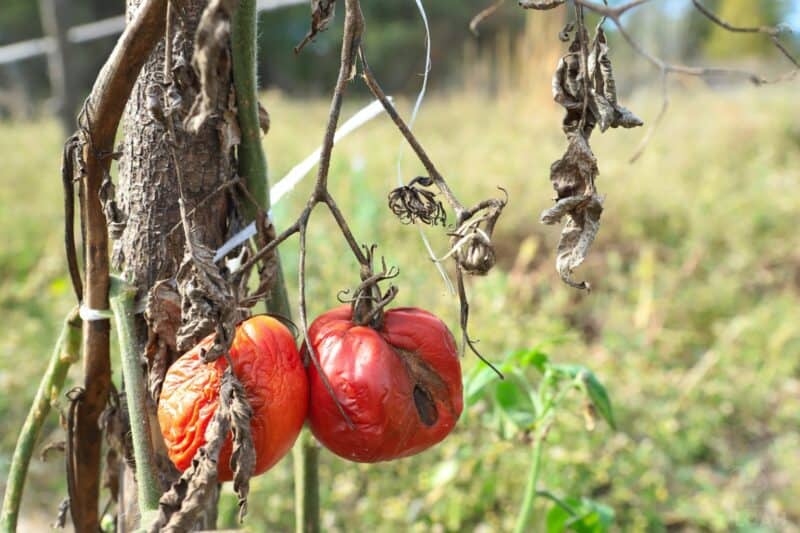
But before you can enjoy the fruits of your labor, you need to make sure you are giving your tomato plants the proper care – including the right amount of sun.
On average, mature tomato plants need around six to eight hours of sunlight per day to produce healthy fruits. Younger plants, like seedlings, need between 14 and 18 hours of sunlight per day. Of course, the amount of sunlight your tomato plants needs will vary slightly depending on the growing conditions and variety.
How Much Sun Do Tomatoes Need?
Depending on the stage of growth, tomatoes need different amounts of sunlight. This is a guide on how much sun tomatoes need at each stage of growth.
Seeds
Tomato seeds need about 12-18 hours of sunlight to germinate. If you are growing your tomatoes indoors, use grow lights. Place the grow lights about 3-6 inches above the soil.
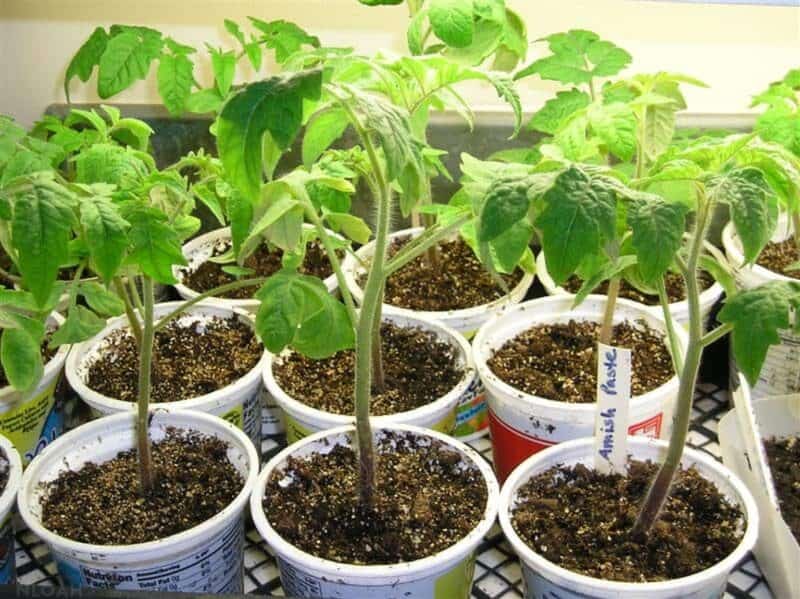
Seedlings
Once the seeds have germinated and seedlings have sprouted, they will need about 14-16 hours of sunlight each day.
If you are still growing your tomatoes indoors, continue to use grow lights. Once the seedlings have 2-3 leaves, you can start to thin them out so that only the strongest plants are left.
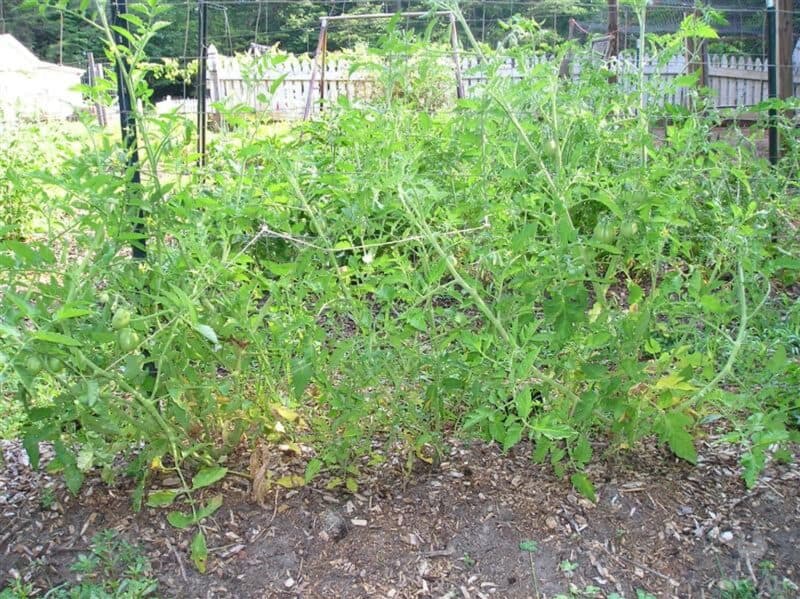
Fresh Transplants
If you are transplanting your seedlings outdoors, they will need about 6-8 hours of sunlight each day. When you first transplant them, give them some shade for a few days until they have adjusted to their new surroundings.
Mature Plants
Mature tomato plants will need about 6-8 hours of sunlight each day. Once the tomatoes start to ripen, you can reduce the amount of water that you give them so that they don’t split open.
Can You Grow Tomatoes in the Shade?
Ideally, tomatoes should be grown in full sun. However, if you’re limited on where you can put your garden, tomatoes can tolerate a bit of shade as long as you follow these tips:
Prune Wisely
Pruning your tomato plants judiciously can help increase air circulation and allow more sunlight to reach the leaves and fruits. Be sure to remove any dead leaves or branches, as well as any leaves or branches that are blocking sunlight from reaching the center of the plant.
It’s also a good idea to remove any small or misshapen fruits so that the plant can focus its energy on producing fewer, but larger and healthier, fruits.
Use Reflective Surfaces
Placing reflective surfaces (such as foil or white sheets) around your tomato plants can help bounce more light onto the leaves, which will help them photosynthesize better. Just be sure not to place the reflective surfaces too close to the plants themselves, as this could cause leaf scorch.
Mulch
Mulching around your tomato plants helps retain moisture and keeps weeds from competing with your plants for water and nutrients.
It also helps insulate the roots and prevents swings in soil temperature, both of which can stress tomato plants and reduce fruiting.
An added bonus is that mulch also reflects light back up onto the leaves, further increasing photosynthesis!
Can Tomatoes Get Too Much Sun?
Tomatoes, like all other plants, need sunlight in order to survive.
However, too much sun can be just as damaging as too little sun. Too much sun can cause tomatoes (and other fruits and vegetables) to become sunburned.
Sunburned produce is often discolored and misshapen. In extreme cases, sunburn can even kill the plant. As such, it’s important to make sure that your tomato plants are getting the right amount of sunlight—not too much, and not too little.
Do Tomatoes Prefer Morning or Afternoon Sun?
It is important to note that the intensity of the sun can vary throughout the day.
For example, morning sun is typically not as intense as afternoon sun. As a result, some gardeners believe that tomatoes prefer morning sun.
This allows the plants to receive the benefits of sunlight without being exposed to intense heat later in the day.
Others argue that afternoon sun is actually better for tomatoes. They point out that afternoon sun helps to promote evaporation, which can help to keep the tomato plants from getting too wet. In hot climates, this can be especially important in preventing disease.
Ultimately, there is no definitive answer as to whether tomatoes prefer morning or afternoon sun. The best strategy is to experiment and see what works best in your particular garden.
What You Need to Consider When Planting Your Tomatoes
Tomatoes are warm-weather plants that prefer full sun, which means they need at least six hours of direct sunlight each day.
However, if you live in an area with very hot summers, it’s best to give your tomatoes some afternoon shade to prevent them from getting too much heat.
Too much sun can cause tomatoes to sunscald, which makes them turn yellow or white and affects their flavor.
Another important factor to consider is the type of tomato you’re growing. Determinate tomatoes, which are typically grown in home gardens, mature all at once and don’t require as much sunlight as indeterminate varieties.
Indeterminate tomatoes, on the other hand, produce fruit throughout the season and can benefit from up to eight hours of sunlight each day.
The amount of sunlight that tomatoes need depends on the specific variety of tomato plant as well.
Some varieties (such as “Rutgers,” “Better Boy,” and “Big Beef”) are considered “full-sun” varieties and need at least 8 hours of direct sunlight per day to produce fruit.
Other varieties (such as “Oregon Spring,” “Sun Gold,” and “Yellow Pear”) are considered “part-sun” or “shade-tolerant” varieties and can produce fruit with as little as 4 hours of direct sunlight per day.
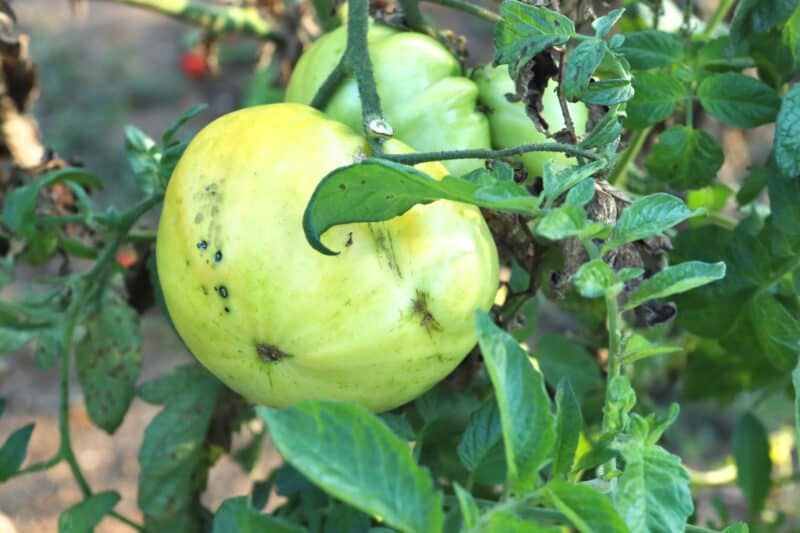
What Happens if Tomatoes Don’t Get Enough Sun?
One of the most important functions of sunlight is that it helps tomatoes ripen. The process of photosynthesis converts light into chemical energy that the plant can use to create glucose from CO2 and water.
Glucose is essential for the plant to create ATP, which is used for various metabolic processes, including ripening fruit. So, without enough sunlight, tomatoes will not ripen properly.
Fruit that doesn’t receive enough sunlight tends to be small and green (unripe). It will also have a lower sugar content than fruit that has been exposed to plenty of sunshine.
If you’ve ever bitten into a green tomato straight off the vine, you know just how unappetizing and tasteless it can be!
Ripe tomatoes, on the other hand, are typically red or orange (depending on the variety) and have a sweet, juicy flavor that makes them perfect for eating raw or cooked.
Sunlight also helps tomato plants produce lycopene, which is a red pigment that gives tomatoes their characteristic color.
Lycopene is also an antioxidant with numerous health benefits, including a reduced risk of heart disease and cancer. Studies have shown that tomatoes highest in lycopene are those that have been grown in sunny conditions.
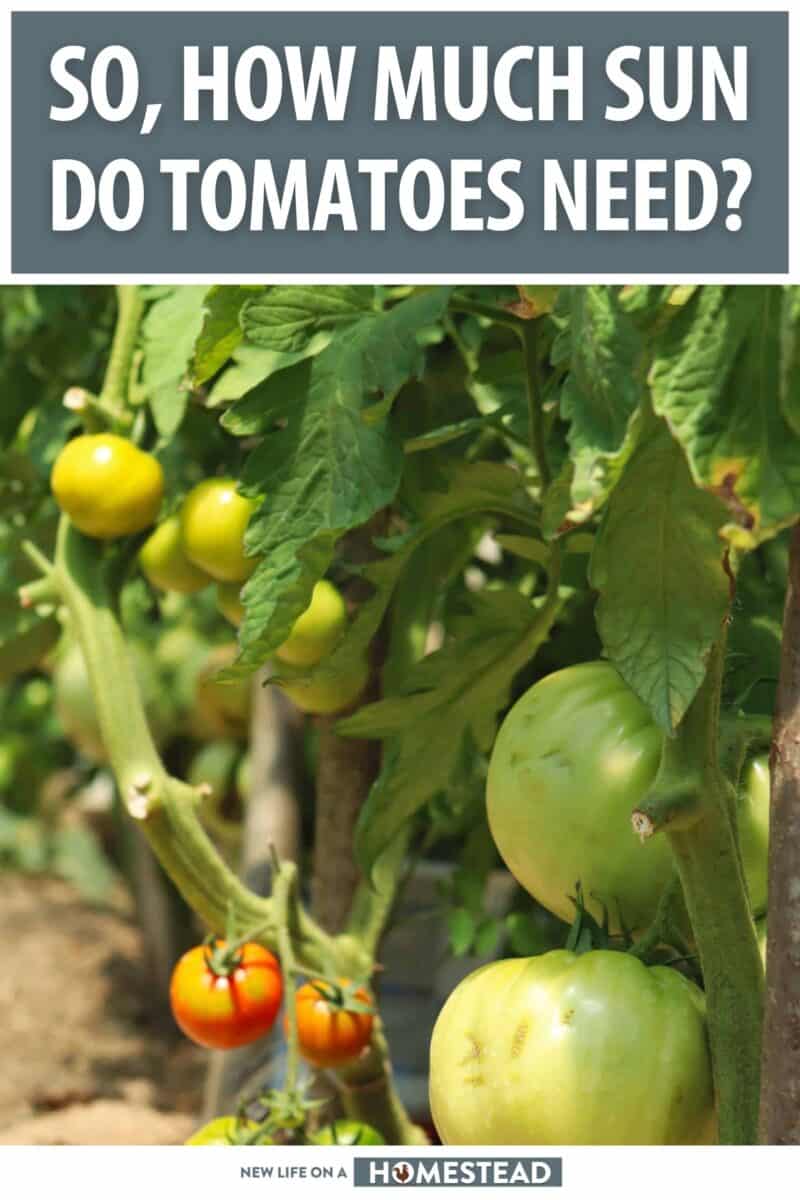

Rebekah is a high-school English teacher n New York, where she lives on a 22 acre homestead. She raises and grows chickens, bees, and veggies such as zucchini (among other things).
